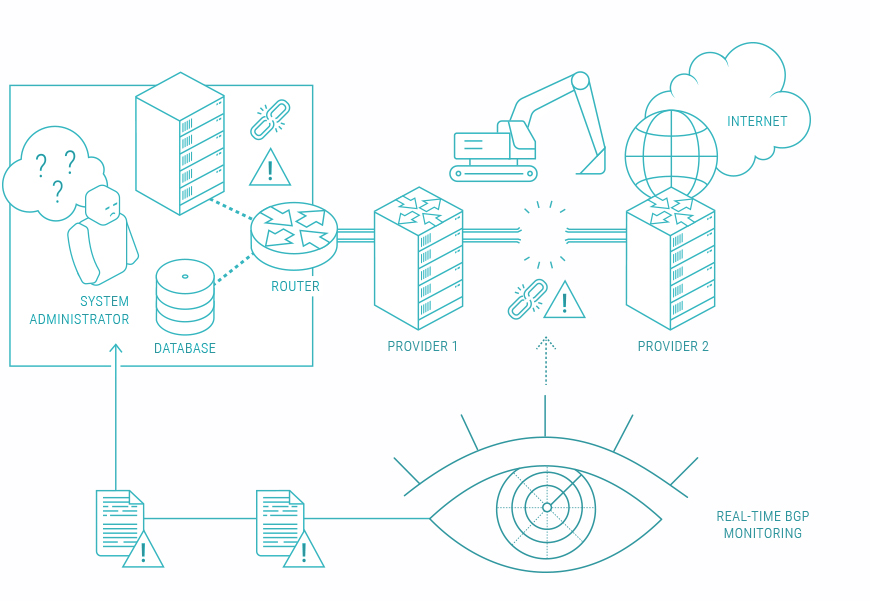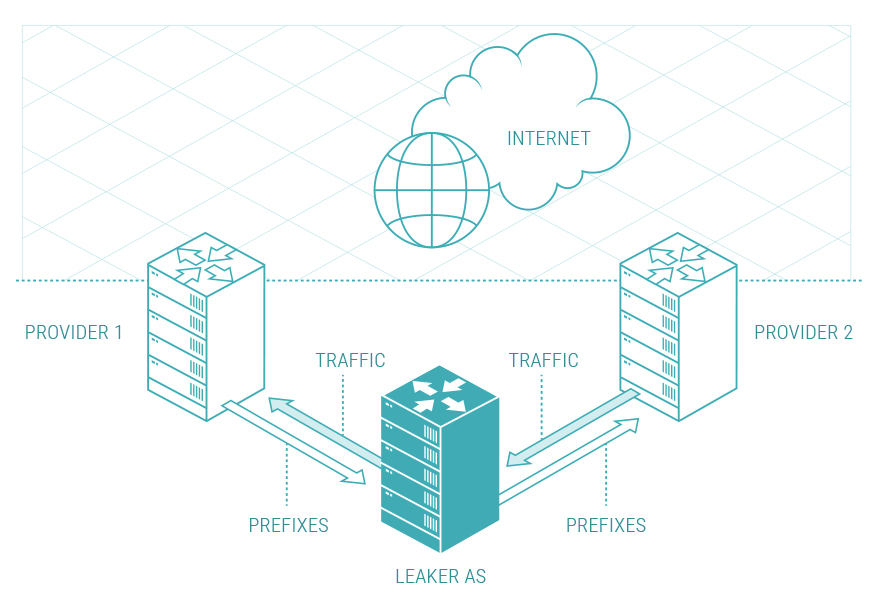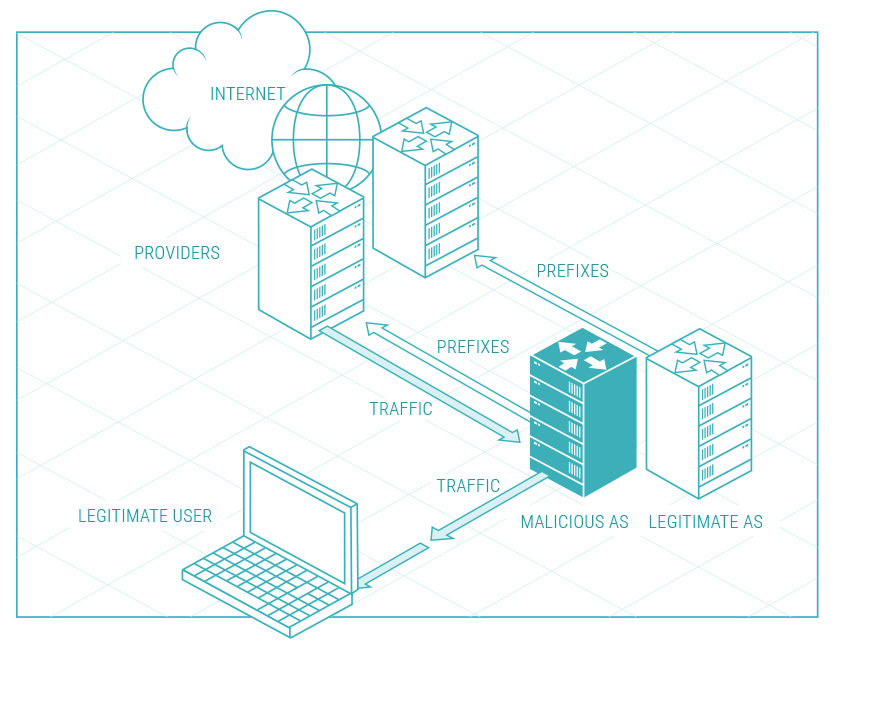Real-time BGP monitoring
Your unique tool to find and fix network anomalies
The Internet is based on the interaction between autonomous systems (AS). AS constantly exchanges routing information through the BGP protocol that makes it possible to choose traffic routes between cities and countries all around the world.
However, the fragility of the Internet lies in the lack of security mechanisms and limitations within the specifications of the Border Gateway Protocol.
Therefore, different routing anomalies may occur during the exchange process caused by errors in the network equipment configuration or attacks by cybercriminals.
In 2021 only:
- 38% of various telecommunication operators triggered global network anomalies, which they did not even realize in some cases;
- Each of these anomalies caused routing troubles for 91% autonomous systems.
Why do you need BGP monitoring
It is almost impossible to detect BGP anomalies once inside the customer's network, so troubleshooting BGP incidents is a significant challenge for network engineers.
To monitor traffic and detect anomalies just in time, you need an external professional tool that functions at the cross-domain routing level.

Qrator.Radar
Qrator.Radar from Qrator Labs is a unique platform designed to analyze routing information, detect incidents and changes in network connectivity in real-time.
Key benefits:
- One of the world's largest traffic data collectors — over 800 BGP sessions with major ISPs globally;
- The unique mathematical model that defines the relationships between AS's;
- Large number of types of BGP incidents detected;
- Historical routing data recorded since 2017;
- A platform to detect network anomalies and recognize their conditions and consequences in real-time;
- Seamless integration with other network monitoring systems through syslog, e-mail or API.
Operating Principles:
- Data is delivered to the Qrator.Radar collector in the form of route tables of all the Internet subnets available to operators (full view).
- Qrator Labs' specially developed algorithms are used to analyze the received full view.
Qrator.Radar monitors the following types of network anomalies
BGP Route Leaks
BGP Route Leak is the redirection of traffic through an autonomous system that should not be on the route.

Impact:
- Increased network latency (RTT). In some cases, the delay to an affected service increases by 8 times and reaches several seconds during an incident;
- Equipment failures and traffic losses (up to complete loss — DoS);
- Man-in-the-Middle attacks.
BGP Hijacks
BGP Hijack is an illegitimate prefix announcement (traffic hijacking).

Impact:
- Traffic diversion to phishing sites and arranging Man-in-the-Middle attacks;
- Searching for passwords, financial and personal data in transmitted data;
- Deliberate organization of resources lockouts;
- DoS due to configuration errors.
Bogons
Bogon is an announcement of prefixes and Autonomous System Numbers (ASNs) that should not occur in routing tables.
Impact:
- Network unavailability due to invalid route filtering;
- Disclosing information about the local network to third parties.
Qrator.Radar captures several thousand routing incidents worldwide every day.
Feedback on anomalies is sent to customers in real-time;
This helps to respond to network incidents immediately, mitigating possible adverse effects on the business and ensuring better network performance.